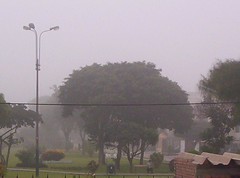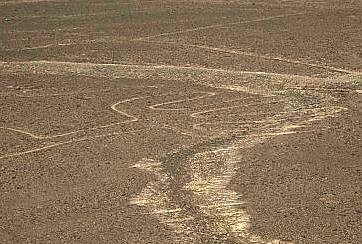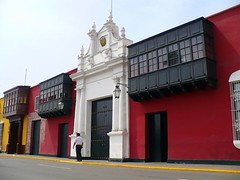Inca Garcilaso de la Vega

Inca Garcilaso de la Vega
Born in Cuzco in 1539, Garcilaso de la Vega was the son of Spanish conqueror Sebastián Garcilaso de la Vega y Vargas and Inca princess Palla Chimpu Ocllo. He grew up in the earliest years of the Spanish empire, just when the conquered Incas were becoming used to Spanish rule. He lived among and was related to indigenous Peruvians who were alive in the days of Huascar’s rule in Cuzco and his subsequent battle with half-brother Atahualpa, as well as those who were alive during the rule of Huayna Capac.
He grew up learning both Quechua and Spanish while living with his mother – until he turned 10. It was then, with the death of his father who had long since abandoned the family, he decided to go to study in Spain with the 4,000 pesos he had received as an inheritance.
He was taken in by his father’s brother and received his education in Madrid. But Spanish life was not so easy. As marriages between the Spanish and indigenous peoples of the Americas were not recognised by the Spanish crown, he was considered and illegitimate child and had to spend years protesting for the rights of his father – which included a payment for services to the crown.
His greatest achievement was the detailed documentation of Inca history, from its founding of Cuzco by the sun-child Manco Capac to the death of Atahualpa at the hands of the Spanish. His early years in the Andean city and his firm grasp of Quechua gave him ample time to learn the customs and stories of his indigenous family members.
The Inca
His troubles in Madrid and his upbringing by royal Quechua natives in the conquered city of Cuzco during a time of great levels of Spanish cruelty made the chronicler fiercely proud of his Incan heritage. He was often refered to as Inca Garcilaso or just El Inca – literally meaning The Royal – intended to let Spaniards know he was royalty.
His writing made it clear who was in the right and who was in the wrong during the Spanish conquest and no amount of Spanish education and influence could change this. While Spanish propaganda prefered to vilify the Incas “barbaric” practices and belittle their achievements, Garcilaso de la Vega praised their fair, honest and advanced society.
When, in the 1700s, Tupac Amaru II attempted a rebellion, the Spanish authorities under orders from the king banned Garcilaso’s now famous book Comentarios Reales, declaring it “dangerous”.
As the son of Inca royalty, historians argue that he had a somewhat biased opinion of life in the Andeans under Quechua Inca rule. Suggestions that the Incas were altruistic in their wish to expand their empire, and the positive light he place on the Inca conquering of free peoples create this doubt.
The Spaniard
As the son of a Spaniard who ended up spending most of his life in Spain and having been educated in Europe, more doubts over the accuracy of his work surface. He seems to demonstrate a seemingly simplistic European style of royal inheritance for example.
Like a good Spaniard and good Christian, in a previous work about the conquest of Florida, he seems to promote the benefits of Christian rule. In Comentarios Reales he ridicules the “simple” and “gullible” indigenous for believing the Incas were children of the sun.
He also fails to mention unfavourable (to him) Inca practices, such as human sacrifice, that wouldn’t go down too well with those in the new society in which he lived and religion he practised.
Comentarios Reales
His masterpiece, Comentarios Reales, is considered the be the best and most detailed account of Inca history and early colonial rule. Although santitsed and not entirely accurate, it is thanks to this book, and the first mestizo writer of colonial South America, that we even have a record Inca history and timeline to contrast with all other research now undertaken.
Tags: 1500s, atahualpa, chronicles, colonial, comentarios reales, cusco, garcilaso de la vega, huascar, huayna capac, incas, manco capac, quechua, spaniards




![Peru celebrates Independence Day with fountain of booze [Featured]](http://farm4.static.flickr.com/3236/2697186491_f7a74ae0da_m.jpg)





